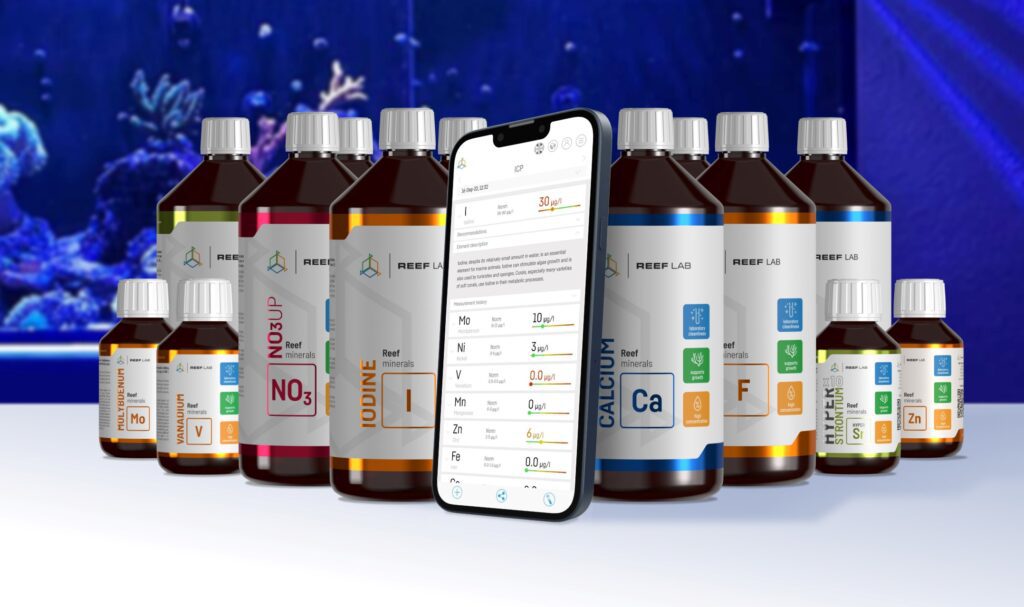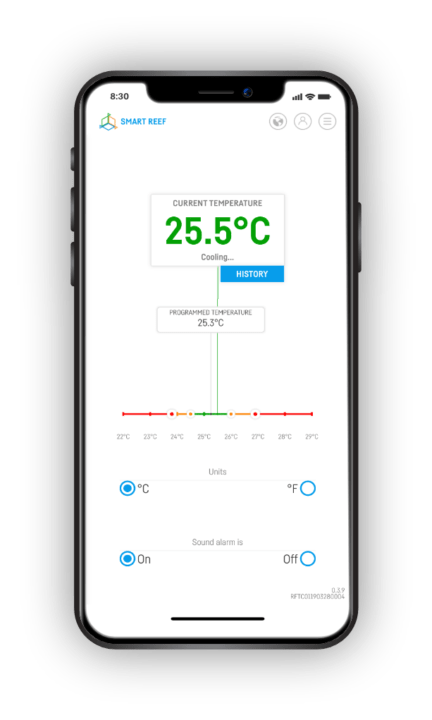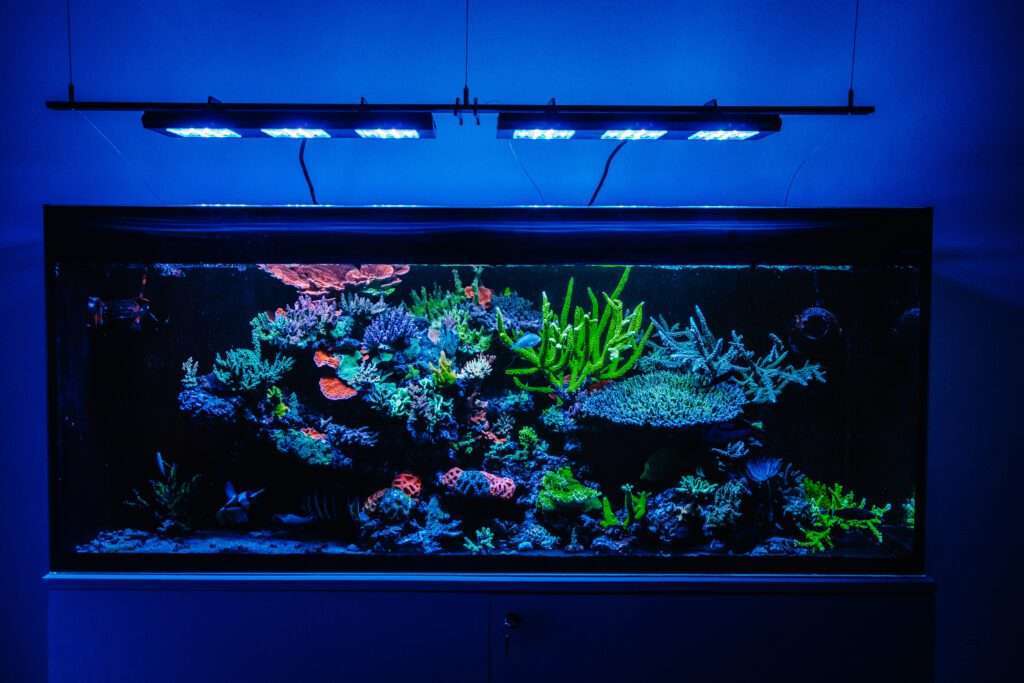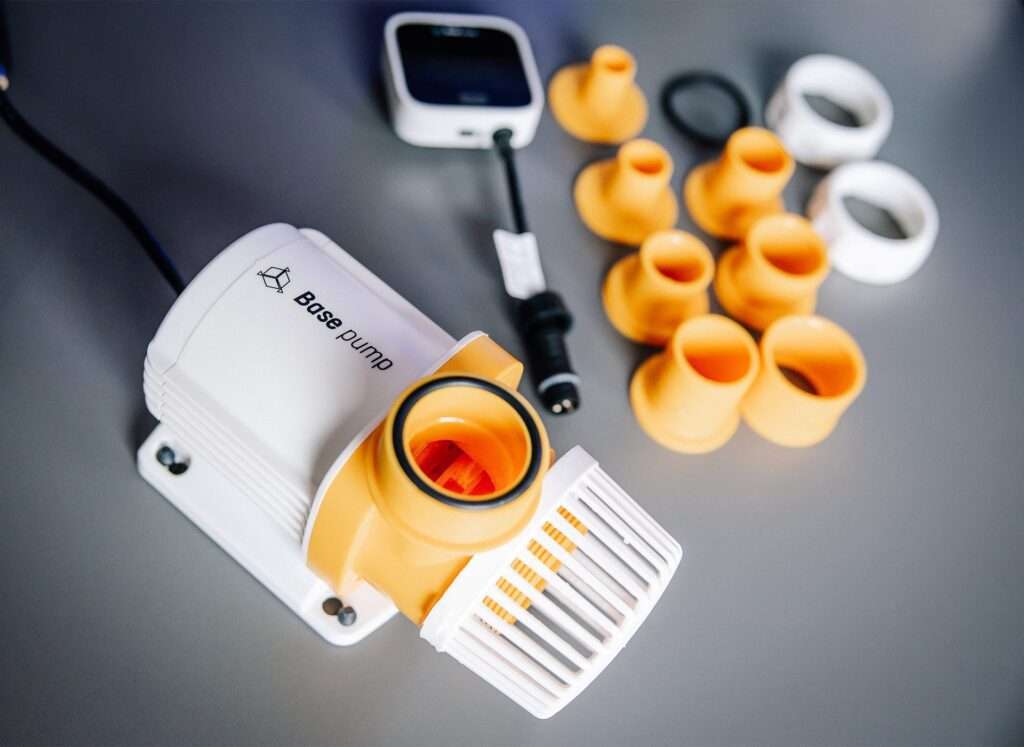Stability is the key to success!

Table of Contents
Introduction – Stability in a marine aquarium
Stability of parameters in a marine tank is the foundation of success in its management. Many beginner aquarists ponder what is truly the most important in managing a reef tank, and what they should do to keep their aquarium healthy and visually appealing. Moreover, novices often contemplate at the start of their journey how to set up and maintain a beautiful Acropora aquarium. Nevertheless, what brings the most benefits in our passion is patience.
Additionally, experienced aquarists know that the key to success is nothing else but the stability of the aquarium.
In this article, I plan to discuss several aspects related to the stability of the tank and talk about what needs to be taken care of to maintain stable parameters. Moreover, mastering these parameters is not easy, but it is a challenge that you should not be discouraged by. Therefore, trust me – learning marine aquaristics is an immensely satisfying adventure!
Chemistry and stability
Gaining control over stable chemistry in an aquarium means maintaining the appropriate parameters. This may seem like a trivial statement, yet it is a very challenging task! In this part of the article, I will try to bring you closer to the topic of parameters, and besides that, I hope that this topic will be swiftly picked up on Social Reef. Additionally, my examples will be supplemented with many interesting observations from aquarists active on the platform.
What is salinity? The table below shows which components are most abundant in seawater.
Thus, in terms of chemical properties, water in a marine aquarium is a solution, i.e., a homogeneous mixture of many components. In seawater, we find: macro-components, which constitute over 99.9%, and micro-components. Therefore, to maintain constant water parameters chemically, we need to take care of all elements, both macro and micro.
Levels of micro and macro elements in a marine aquarium
In the table below, you will find the desired levels for macro and microelements.
Element | ppm | Element | ppm | Element | ppm |
Sodium NaCl | 10800 | Zinc Zn | 0.005 | Praseodymium Pr | 0.00000064 |
Chlorine NaCl | 19400 | Gallium Ga | 0.00003 | Neodymium Nd | 0.0000028 |
Magnesium Mg | 1290 | Germanium Ge | 0.00006 | Samarium Sm | 0.00000045 |
Sulfur S | 904 | Arsenic As | 0.0026 | Europium Eu | 0.0000013 |
Potassium K | 392 | Selenium Se | 0.0009 | Gadolinium Gd | 0.0000007 |
Calcium Ca | 411 | Krypton Kr | 0.00021 | Terbium Tb | 0.00000014 |
Bromine Br | 67.3 | Rubidium Rb | 0.120 | Dysprosium Dy | 0.00000091 |
Helium He | 0.0000072 | Strontium Sr | 8.1 | Holmium Ho | 0.00000022 |
Lithium Li | 0.170 | Yttrium Y | 0.000013 | Erbium Er | 0.00000087 |
Beryllium Be | 0.0000006 | Zirconium Zr | 0.000026 | Thulium Tm | 0.00000017 |
Boron B | 4.450 | Niobium Nb | 0.000015 | Ytterbium Yb | 0.00000082 |
Carbon C | 28.0 | Molybdenum Mo | 0.01 | Lutetium Lu | 0.00000015 |
Nitrogen ion | 15.5 | Ruthenium Ru | 0.0000007 | Hafnium Hf | <0.000008 |
Fluorine F | 13 | Rhodium Rh | . | Tantalum Ta | <0.0000025 |
Neon Ne | 0.00012 | Palladium Pd | . | Tungsten W | <0.000001 |
Aluminium Al | 0.001 | Argentum Ag | 0.00028 | Rhenium Re | 0.0000084 |
Silicon Si | 2.9 | Cadmium Cd | 0.00011 | Osmium Os | . |
Phosphorus P | 0.088 | Indium In | . | Iridium Ir | . |
Argon Ar | 0.450 | Stannum (tin) Sn | 0.00081 | Platinum Pt | . |
Scandium Sc | <0.000004 | Antimony Sb | 0.00033 | Aurum (gold) Au | 0.000011 |
Titanium Ti | 0.001 | Tellurium Te | . | Mercury Hg | 0.00015 |
Vanadium V | 0.0019 | Iodine I | 0.064 | Thallium Tl | . |
Chromium Cr | 0.0002 | Xenon Xe | 0.000047 | Lead Pb | 0.00003 |
Manganese Mn | 0.0004 | Cesium Cs | 0.0003 | Bismuth Bi | 0.00002 |
Ferrum (Iron) Fe | 0.0034 | Barium Ba | 0.021 | Thorium Th | 0.0000004 |
Cobalt Co | 0.00039 | Lanthanum La | 0.0000029 | Uranium U | 0.0033 |
Nickel Ni | 0.0066 | Cerium Ce | 0.0000012 | Plutonium Pu | . |
Copper Cu | 0.0009 |
How to maintain the stability of chemical elements in seawater?
To ensure the stability of chemical elements, we can employ several methods. Firstly, the simplest one is to perform regular water changes. Consequently, replacing 10% of the water once a week will be sufficient for the proper maintenance of easy corals.
Secondly, there is a more advanced method that involves dosing components. In this case, we measure three basic parameters: Kh, Ca, Mg. Components are usually available in three separate bottles, which, in addition to the mentioned macroelements, will also contain microelements in appropriate proportions. Meanwhile, corals and other animals should consume macro- and microelements in equal proportions. For example, if we add a Ca component, we also add other elements that are part of this liquid’s composition. As a result, the dosage is adjusted to the consumption, which we determine through measurements.
The advanced method includes measuring basic parameters such as Kh, Ca, Mg, and performing periodic ICP-OES measurements. We dose components as above, and after the ICP-OES examination, we precisely supplement other elements. Thus, if the examination shows that we are, for instance, lacking zinc, we additionally add zinc according to the recommendations.
The method of dosing can vary. However, the most important thing is that the chemical environment remains stable.

Additional factors affecting stability
One of the elements influencing stability in a marine aquarium is the use of good quality RO water. We use it both as a base for water changes and to replenish evaporated water in the aquarium. Tap water contains minerals, and if it is not purified, additional elements will be introduced in an uncontrolled manner.
Moreover, it is important to ensure that no contaminants, such as rusting metal parts or other unwanted elements, enter the water. If we do not control this, a lot of pollutants will uncontrollably enter the aquarium, and elements such as iron, nickel, tin, or zinc can harm the corals.
If we are making water changes, the salt must be checked – we need to be sure of its composition. We do not want to change water with salt that could harm rather than help. If its composition is doubtful, it may raise the level of some element, which might (but not necessarily) harm our corals.
Biology
Another important issue in marine aquaristics is the stability of biological levels. In marine aquaristics, in a nutshell, biology is expressed by three parameters: NO3, PO4, and pH of the water. Based on these parameters, we know what is happening in the tank. Of course, there are many more parameters that determine the level of biology in an aquarium, but that’s a topic for another article.
In the process of building a marine aquarium, we develop a filtration method to control NO3 and PO4. If we have started the aquarium well – with high-quality live rock and it is not overstocked – then we can generally assume that NO3 and PO4 should maintain themselves at the proper level.
On ReefPedia, you can find several separate articles about filtration and maintaining NO3 and PO4.
In general, the idea is to keep these parameters at a constant level. So, choose a type of filtration and maintain the biology at the appropriate level.
The topic of pH is described by me on ReefPedia in the simplest way possible. From the available articles, you can learn, among other things, why you have low pH and read about ways to raise it. Be sure to read the article on ReefPedia about the importance of pH in a marine aquarium, and you will understand why stable pH is crucial.
Temperature stability
Maintaining a constant temperature may seem simple – buy a heater with a thermostat and the issue seems resolved. However, during my experience with marine aquaristics, I’ve seen many disasters related to temperature. Sometimes the heater broke, other times it was too warm in the room during summer and the animals overheated. Therefore, believe me – it’s worth spending some time to better understand the topic of temperature.
Our task is to maintain a constant temperature. It’s worthwhile to invest in a temperature monitoring device with alarms, for example, our own production. For the summer period, it is wise to invest in air conditioning in the room or a water chiller (or at least fans).
The range of temperatures that are permissible in a marine aquarium is 23-28 ℃ / 75.2 – 82.4 ℉.

Lighting stability
A constant level of lighting, known as stability, is not just about a repetitive cycle of sunrises and sunsets – it’s also about the consistent quality of light. Moreover, you can find more information about lighting in a marine aquarium in the article “Light the a marine aquarium – you need to know this!”

Supporting equipment for stability
It’s worth mentioning our devices that support the aquarium, such as return pumps, skimmers, circulation pumps, etc. Besides, they operate and we assume they will continue to operate, but sometimes it’s prudent to have a spare unit or check the availability at a trusted marine aquatics store. Therefore, in case of any problems, you can quickly replace any damaged equipment.

Summary
As you can see, the stability of water parameters is crucial for success in maintaining a marine aquarium. Numerous factors contributing to this success have been outlined in the article. For a deeper understanding of the topic, I strongly encourage reading the linked articles. Discussing stability is essential, and to further explore this and other topics, I invite you to join the Social Reef platform. Let us know what else, in your opinion, we need to take care of. Moreover, let’s consider what needs to be done to have a beautiful, stable aquarium.

About the author

Marek Protasewicz
Reefkeeping has been my passion for over 10 years now. I love learning. The hobby has taught me many valuable lessons, patience being the best example. Combining work and passion is my path. I run Crazy Coral, a marine aquarium shop, for a number of years. Building this business from the scratch I learnt from my own mistakes at a heavy cost.
Later I managed a project aimed at development of methods for quick growth of Corals in non-natural conditions. The project was carried out by Get Sales, Poland. Presently, I am responsible for distribution strategy at Reef Factory, of which I am a co-founder. The company produces smart devices for marine aquaristics. The last projects I have been involved in are Social Reef and ReefPedia.


